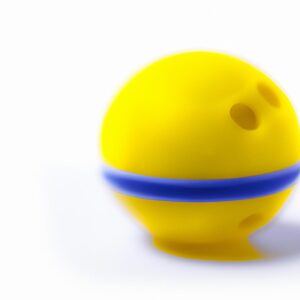Exploring the Role of Compression Wearables in Post-Workout Recovery: Science and Personal Experiences
# Exploring the Role of Compression Wearables in Post-Workout Recovery: Science and Personal Experiences
In the ever-evolving landscape of fitness and recovery, compression wearables have emerged as a popular tool among athletes and fitness enthusiasts. These specialized garments, which apply pressure to specific areas of the body, are designed to enhance recovery after intense workouts. With a blend of anecdotal evidence and scientific research, many are turning to compression wearables to alleviate soreness, reduce swelling, and improve overall performance. In this blog post, we will explore the science behind compression wearables, share personal experiences, and discuss practical tips related to nutrition and exercise that can further enhance post-workout recovery.
## The Science Behind Compression Wearables
### Understanding Compression Technology
Compression wearables are designed to apply controlled pressure to the muscles and tissues. This pressure can help improve blood circulation, which in turn enhances the delivery of oxygen and nutrients to the muscles while facilitating the removal of metabolic waste products. By improving circulation, compression wearables are believed to reduce muscle soreness and accelerate recovery time.
### Research Findings
Numerous studies have examined the effectiveness of compression garments in post-exercise recovery. Research indicates that wearing compression clothing can lead to reduced muscle soreness, lower levels of creatine kinase (a marker of muscle damage), and improved perceived recovery rates. While results can vary based on individual factors, many athletes report feeling less fatigued and more prepared for subsequent workouts when incorporating compression wearables into their recovery routine.
## Personal Experiences with Compression Wearables
### Athlete Testimonials
Many athletes have shared their personal experiences with compression wearables, often describing noticeable improvements in recovery times. For instance, a marathon runner reported that wearing compression sleeves on their calves significantly reduced post-race swelling and soreness. Similarly, a weightlifter noted that using compression shorts helped alleviate muscle stiffness after intense training sessions, enabling them to perform better in subsequent workouts.
### Everyday Fitness Enthusiasts
Even casual fitness enthusiasts have found benefits in using compression wearables. A weekend warrior who regularly participates in high-intensity interval training (HIIT) noted that wearing compression socks during and after workouts improved their overall comfort and recovery experience. These personal anecdotes emphasize that compression wearables can be beneficial not only for elite athletes but also for anyone looking to enhance their post-workout recovery.
## Nutrition Tips
### Fueling Recovery
Proper nutrition plays a crucial role in post-workout recovery. To maximize the benefits of compression wearables, it is essential to consume a balanced diet rich in nutrients. Here are some key nutrition tips to consider:
1. **Hydration**: Always rehydrate after a workout. Water or electrolyte drinks can help replenish lost fluids and electrolytes.
2. **Protein Intake**: Aim to consume a protein-rich snack or meal within 30 minutes post-exercise. Options like Greek yogurt, protein shakes, or lean meats can help repair muscle tissues.
3. **Carbohydrates**: Don’t forget to include healthy carbohydrates. Foods like sweet potatoes, quinoa, or whole-grain bread can replenish glycogen stores for energy recovery.
4. **Antioxidant-Rich Foods**: Incorporate fruits and vegetables high in antioxidants, such as berries and spinach, to combat inflammation and promote healing.
## Exercise Advice
### Incorporating Compression Wearables
When integrating compression wearables into your fitness routine, consider the following tips:
1. **Choose the Right Fit**: Ensure that your compression wearables fit snugly but are not uncomfortably tight. Proper sizing is essential for effectiveness.
2. **Use During and After Workouts**: Many athletes find it beneficial to wear compression gear during their workouts as well as for several hours post-exercise.
3. **Listen to Your Body**: Pay attention to how your body responds to compression wearables. If you notice increased discomfort or adverse reactions, it may be necessary to adjust your usage or consult a professional.
## Health Benefits of Compression Wearables
### Enhanced Recovery
The primary health benefit of compression wearables lies in their ability to enhance recovery. By improving circulation and reducing muscle soreness, these garments help athletes bounce back more quickly after strenuous activities.
### Injury Prevention
Compression wearables may also provide a degree of injury prevention by offering support to muscles and joints. This added stability can help minimize the risk of strains and sprains during physical activity.
### Psychological Benefits
Beyond the physical advantages, wearing compression garments can have psychological benefits as well. Many users report feeling more















Post Comment